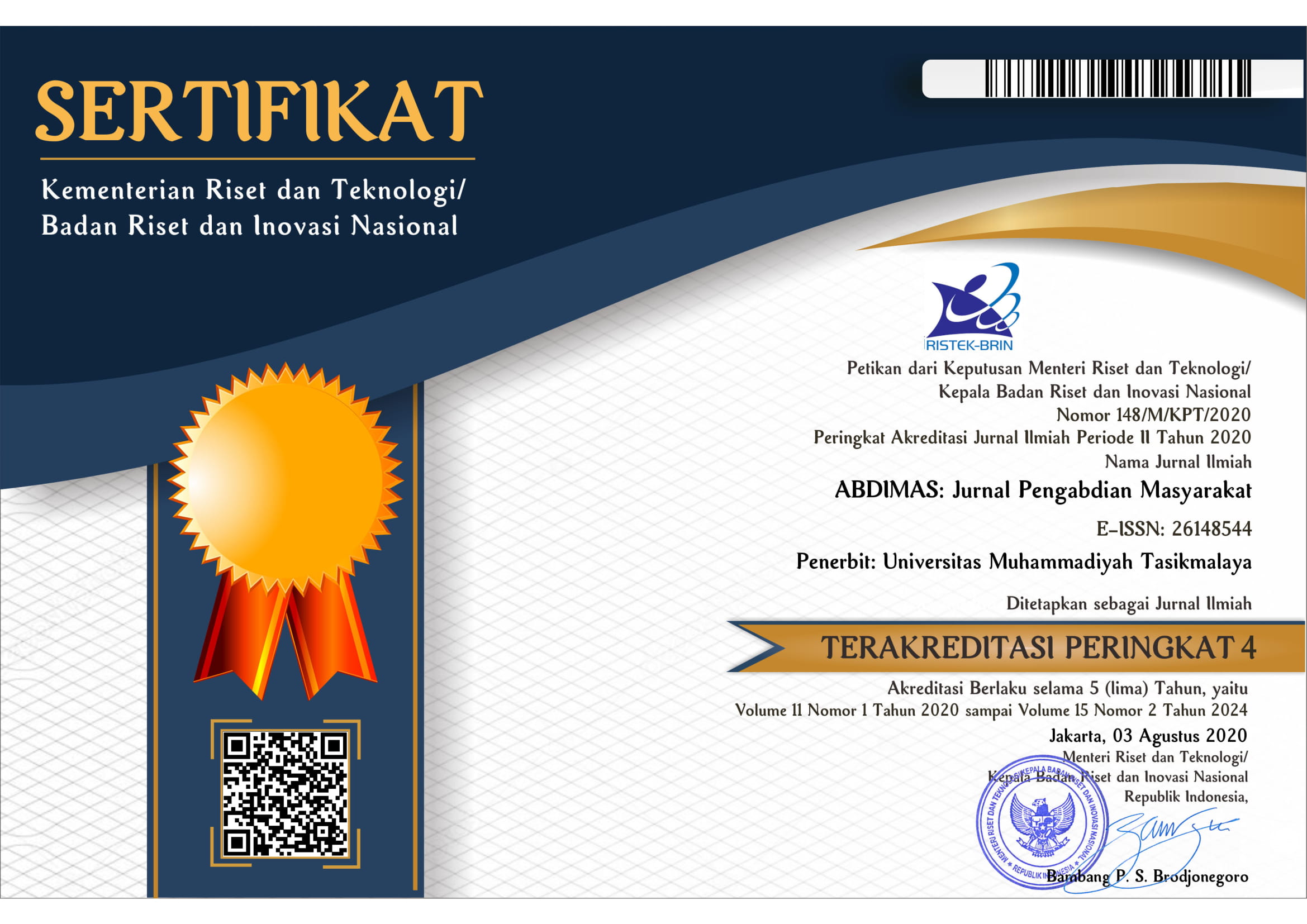The Mapping of Mosque Community to Improve Mosque Engagement in Community
DOI:
https://doi.org/10.35568/abdimas.v4i2.1344Keywords:
Sistem informasi masjid, Kemakmuran masjid, Internet masjid, Mapping data jamaahAbstract
The Mosque in the Prophet Muhammad SAW era had a strategic role. The role is to be a solution and provide prosperity for the Muslims in particular and the surrounding community in general. Currently, the mosque plays a narrower role. It is a provider of facilities for pilgrims to carry out routine worship. In order for this role to increase, the mosque administrator, called DKM (Mosque Prosperity Council), must know his congregation more closely so that he knows what is needed and then comes to provide solutions. This study aims to create and implement an information system to manage congregational data to improve the role of mosques in the community. The main material that was obtained and prepared was data on residents around the mosque and the stakeholder needs (leaders of organizations around the mosque such as the heads of hamlet (RW), neighbourhood (RT), and youth organizations). The citizen data and stakeholder needs are used to develop the system. Because the specifications of the requirements can change during system development, the development method chosen is the prototyping method. There are two main outputs of this activity, namely the availability of a congregational data mapping application, and the installation of internet network infrastructure at the mosque. The two outputs in their implementation have proven to be beneficial for the congregation and the surrounding community. The information system provides improved service quality to pilgrims and residents in various activities such as zakat and qurbani. Meanwhile, Internet infrastructure provides new hope in easing the burden of community quotas and bringing children closer to the mosque.
Downloads
References
Abdulloh Azzama, M. (2019). Manajemen Masjid Jogokariyan Yogyakarta Sebagai Pusat Kegiatan Masyarakat. Komunika: Journal of Communication Science and Islamic Da’wah Volume 3 (1), 2019, 3(1), 197–205.
Appkey. (2020). Mengapa Framework Laravel Lebih Unggul Dibandingkan Framework yang Lainnya? Berikut Alasannya!
Creswell, J. W. (2014). Research Design, Qualitative, Quantitative, and Mixed Methods Approaches (Fourth Edi). SAGE Publication.
Dennis, A., Wixon, B. H., & Roth, R. M. (2009). System Analysis and Design (Fifth). New: Wiley & Sons.
Nurfatmawati, A. (2020). Strategi Komunikasi Takmir Dalam Memakmurkan Masjid Jogokariyan Yogyakarta. Jurnal Dakwah Risalah, 31(1), 21. https://doi.org/10.24014/jdr.v31i1.9838
Pressman, R. S. (2001). Software Engineering - A Practitioner’s Approach (Fifth). New York: Thomas Casson.
Ridhwan, R. M., Susilo, M. W., Bimasakti, T. E., Chandra, R., Alantaqi, A., & Sugito, S. (2020). TPA Punakawan: Sarana Meningkatkan Kecerdasan Spiritual Anak Berbasis Kearifan Lokal. ABDIMAS: Jurnal Pengabdian Masyarakat, 3(2), 230–235. https://doi.org/10.35568/abdimas.v3i2.456
Siskawati, E., Ferdawati, & Surya, F. (2016). Pemaknaan Akuntabilitas Masjid: Bagaimana Masjid dan Masyarakat Saling Memakmurkan? Jurnal Akuntansi Multiparadigma, 7(1), 70–80. https://doi.org/10.18202/jamal.2016.04.7006














